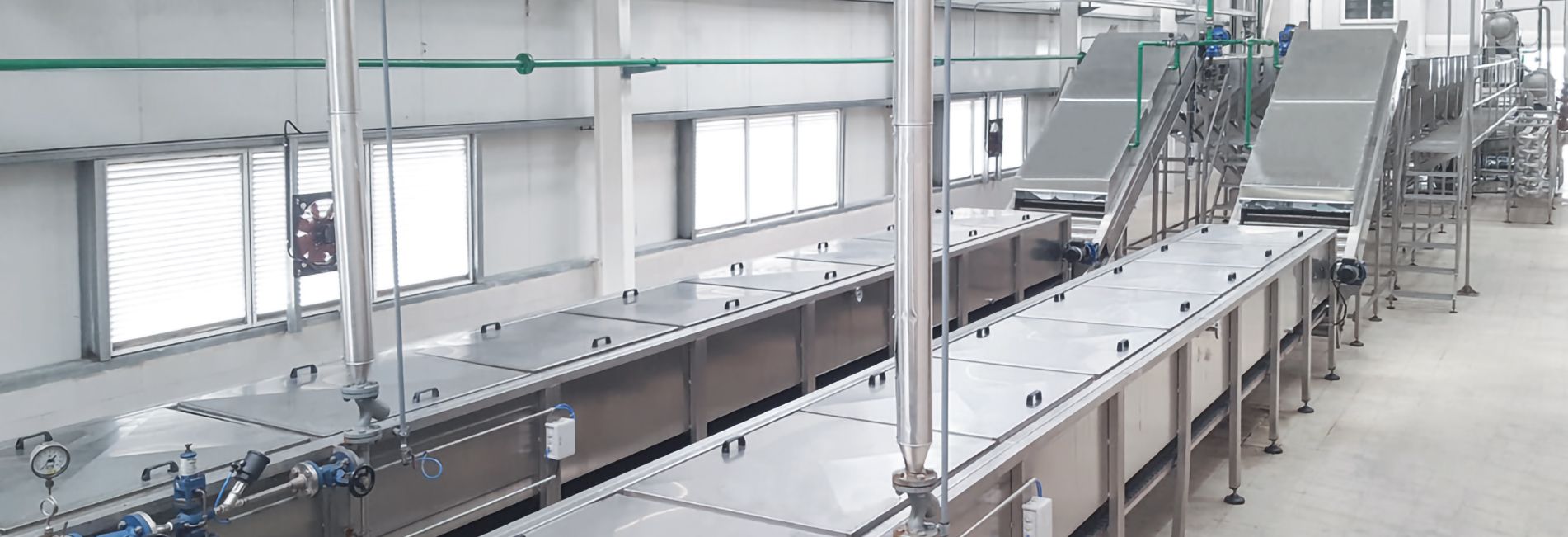
1. What Are Extractive Beverages?
2. Key Stages of the Extractive Beverage Processing Production Line
3. Types of Equipment Used in Extractive Beverage Production
4. Automation and Digital Control
6. Applications and Market Demand
7. Future Trends in Extractive Beverage Processing
A Complete Guide to Extractive Beverage Processing Line
The global demand for functional beverages, herbal drinks, and plant-based infusions has led to the rapid advancement of extractive beverage processing production lines. These systems are designed to extract active compounds—such as polyphenols, flavonoids, alkaloids, and essential oils—from natural raw materials like herbs, roots, fruits, and teas, transforming them into high-quality, shelf-stable beverages.
This article provides an in-depth look at extractive beverages, key raw materials, the step-by-step production process, and the advanced technologies that ensure quality, efficiency, and compliance in commercial-scale operations.
What Are Extractive Beverages?
|
Extractive beverages are liquid consumables produced by extracting bioactive or flavor components from plant or animal sources. These drinks are valued for their health benefits, natural origin, and unique flavors.
Common Types of Extractive Beverages:
• Herbal teas and infusions (e.g., chamomile, ginseng, hibiscus) • Medicinal beverages (e.g., traditional Chinese medicine drinks) • Fruit and root extracts (e.g., ginger, turmeric, goji berry) • Functional beverages enriched with vitamins, antioxidants, or adaptogens
These beverages typically undergo processes such as hot water extraction, alcohol extraction, ultrasonic extraction, or enzyme-assisted extraction, depending on the desired compound and beverage formula. |
 |
Key Stages of the Extractive Beverage Processing Production Line
A modern extractive beverage processing production line involves several integrated stages to ensure efficient extraction, formulation, pasteurization, and packaging. Below is a typical process flow.
1. Raw Material Reception and Pretreatment
• Inspection, sorting, and cleaning of herbs, fruits, or roots.
• Cutting, shredding, or grinding to increase surface area.
• Removal of impurities and foreign matter using vibrating sieves or water-washing tanks.
2. Extraction Process
• The core step where active ingredients are extracted from raw materials using various methods:
• Hot water extraction: Traditional method for herbs and teas.
• Alcohol extraction: For alkaloids, essential oils, and some vitamins.
• Ultrasonic-assisted extraction: Enhances yield and reduces time.
• Enzymatic hydrolysis: Breaks down complex compounds to release bioactives.
The extraction tanks are typically jacketed stainless steel vessels equipped with mixers and temperature controls to ensure optimal extraction conditions.
3. Filtration and Clarification
• Removal of plant residues and suspended solids.
• Use of filtration systems like plate-frame filters, bag filters, or centrifuges.
• Ensures a clean, clear extract ready for blending or concentration.
4. Concentration (Optional)
• If a concentrated beverage base or syrup is needed, vacuum evaporators or membrane concentration systems reduce water content while preserving active
ingredients.
• Especially useful for high-potency herbal drinks or commercial syrup products.
5. Blending and Formulation
• Mixing of extracts with water, sweeteners, preservatives, flavors, or functional additives (vitamins, minerals, etc.).
• Inline mixers and high-shear emulsifiers ensure uniformity.
• Automatic dosing systems control precise ingredient ratios based on recipe parameters.
6. Sterilization and Pasteurization
• HTST (High Temperature Short Time) or UHT (Ultra-High Temperature) sterilization is applied to kill microorganisms and extend shelf life.
• Tubular or plate-type heat exchangers are commonly used.
• Critical for products with long distribution timelines or no refrigeration.
7. Filling and Packaging
• Beverage is filled into bottles, cans, pouches, or Tetra Paks using aseptic or hot-fill filling machines.
• Cap sealing, labeling, and coding are performed inline.
• Packaging lines may include shrink-wrap bundling or carton packing units.
8. CIP (Clean-in-Place) System
• Fully automated cleaning of pipes, tanks, and equipment using detergent and disinfectant cycles.
• Reduces downtime and ensures hygiene compliance with food safety standards.

Types of Equipment Used in Extractive Beverage Production
A fully operational extractive beverage processing production line includes specialized machines tailored for high-volume, sanitary production:
• Extraction tanks with heating, mixing, and vacuum capabilities.
• Centrifugal extractors or percolators for continuous extraction.
• Membrane filtration systems for fine clarification.
• Vacuum evaporators for concentration.
• Inline blending tanks with automatic dosing systems.
• Sterilizers (UHT/HTST) for microbiological safety.
• Automatic filling and capping machines for bottles or pouches.
• Labeling and date coding equipment.
• Control panels (PLC-based) for full system automation and monitoring.
Automation and Digital Control
Modern extractive beverage plants are heavily automated to ensure consistency, reduce labor costs, and maintain traceability.
Key Automation Features:
• Real-time monitoring of temperature, pressure, pH, and flow rates.
• Recipe management systems to store and recall multiple beverage formulas.
• Alarm systems for deviations or equipment failure.
• Batch tracking from raw material to final packaged product.
Smart manufacturing and IoT-enabled sensors are being adopted to optimize energy use, reduce waste, and improve yield.
 |
 |
 |
Quality Control and Safety
To meet consumer expectations and regulatory standards, extractive beverage manufacturers must implement robust quality assurance programs:
• Raw material testing: Moisture content, microbial load, and pesticide residues.
• In-process control: pH, Brix, viscosity, and active ingredient concentration.
• Microbial testing post-sterilization and pre-packaging.
• Shelf life and stability testing under accelerated conditions.
• Traceability systems to monitor each batch through the production cycle.
Compliance with GMP, HACCP, and ISO 22000 is essential for export markets and brand trust.
Applications and Market Demand
The global trend toward natural health products and clean-label beverages is fueling demand for extractive beverages. Consumer preferences are shifting from synthetic, sugar-loaded drinks to plant-based, functional alternatives.
High-demand Products Include:
• Herbal detox drinks
• Immune-boosting elixirs (e.g., echinacea, ginger)
• Adaptogenic beverages (e.g., ashwagandha, ginseng)
• Caffeinated teas (e.g., matcha, yerba mate)
• Sleep aids and anti-stress infusions
Beverage companies are capitalizing on these trends by launching premium, ready-to-drink (RTD) formats with minimal preservatives and maximum health impact.
 |
 |
 |
Future Trends in Extractive Beverage Processing
Looking ahead, the extractive beverage processing production line will continue evolving toward greater efficiency, customization, and sustainability.
Emerging Trends:
• Cold extraction technology to preserve delicate compounds.
• Supercritical CO₂ extraction for solvent-free processes.
• Modular equipment designs for flexible batch sizes and rapid flavor development.
• Blockchain and digital labels for ingredient traceability.
• Waste valorization, using leftover plant matter for compost or bioenergy.
Manufacturers that adopt these innovations will not only improve their ecological footprint but also gain a competitive edge in the health-conscious beverage market.
Conclusion
The extractive beverage processing production line is a vital technological backbone for companies producing herbal, plant-based, and functional drinks. By combining advanced extraction methods, precise automation, and stringent quality controls, manufacturers can deliver beverages that meet consumer demand for both taste and health benefits.
Whether you're producing traditional herbal infusions or cutting-edge adaptogenic blends, investing in a robust, hygienic, and efficient extractive beverage production line is key to scaling operations while maintaining product integrity and safety.
